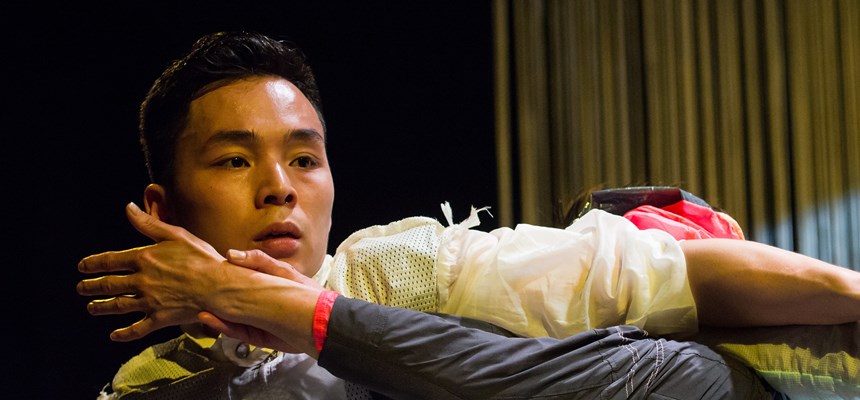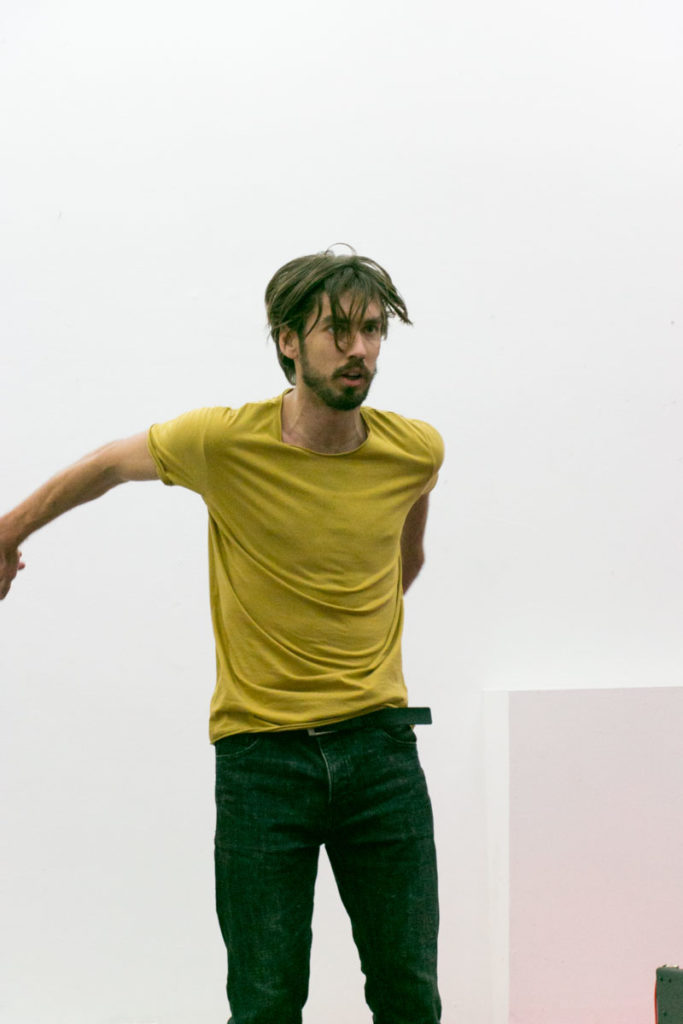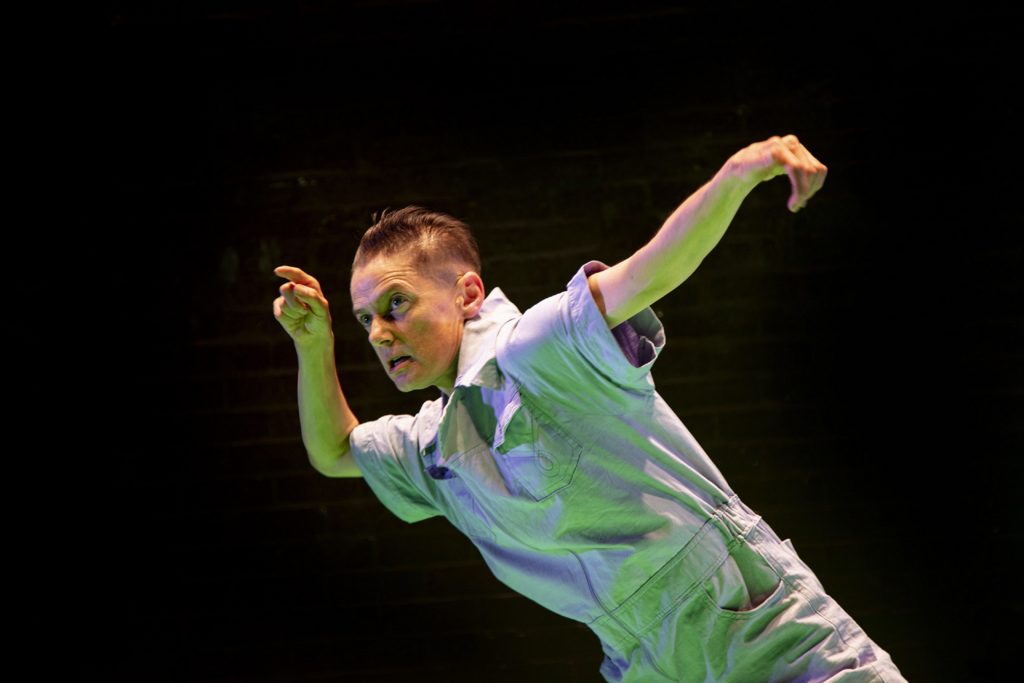
The International Contemporary Dance Collective (iCoDaCo) is a collaborative community of dancers, choreographers, and performers from different European countries coming together to create a new piece of dance. Ahead of their performance of it will come later at Chapter Arts Centre, Cardiff iCoDaCo hosted a workshop to present their research on the theme of transformation. Eva Marloes writes of her experience of the workshop.
I close my eyes and feel the space around me. I feel my feet on the floor, the walls, and people near me. I realise I only become aware of space when I encounter an obstacle, when it is unfamiliar to me, or when it is redesigned in a new way. I often forget about my body too. I am reminded of it when I make a physical effort, feel pain, or trip over something. Dancers are more ‘bodily-minded’. They hug you and, in the dancing space, they take off their shoes and socks, and often trousers to dance in shorts or leggings. They become familiar with the space they use and how to move with one another.

Imre Vass, a dancer from Hungary and part of iCoDaCo, begins the first session of the workshop by asking us to sense the space around us, to sense our bodies, and sense our bodies in relation to the space we are in. He asks us to concentrate on our feet, our footprint, and expand it. ‘Imagine you are painting the floor with our feet,’ he tells us. We begin to slide our feet in small strides to cover our little spot carefully, then in big strides, faster and faster, to cover the entire floor with imaginary paint. We take possession of the space and we do so together. Dance is not just body and space, but the interaction of bodies. It is a constantly changing relationship of people, space, and movement.
The next exercise requires us to touch one another. I roll on the floor while another participant touches me in different parts of my body pushing gently downwards. It is then my turn to ‘apply gravity,’ as Imre calls it. I am slightly uncomfortable at first. I scramble for a polite way of touching someone I have never met before. As the exercise continues, I no longer worry. Then we all come together in a group. All pushing each other downwards towards the ground, to feel the ground and each other. We do not push the other away. Those at the centre barely move while those at the edges end up orbiting around them. It is a ‘testament to human effort,’ Imre says. We connect with our bodies by tensing muscles and with each other by applying pressure on each other’s bodies.
It is an extraordinary experience in sensing the world through the body. We connect with one another and our surroundings without talking, without explanation, without seeing. I find myself with my eyes closed most of the times. I need that darkness to concentrate on my body, to know where it is, and to forget that other people might be watching. We all focus and exert ourselves in every exercise. ‘Do you want my sweat?’ asks a participant. Eddie Ladd, choreographer and performer with iCoDaCo, collects our sweat in small glass jars for an experiment. She uses the sweat to switch a little light on. She leads a rather challenging circuits session to make sure we yield the goods.

The next exercise involves starting with a small movement, like moving a hand or a foot, and letting that move lead to another thus going beyond kinaesthetic movement. I notice I develop patterns of movement and follow a rhythm. I keep my eyes closed but become aware of other people’s rhythms and follow them. The movement arouses images in my head, something another participant notices.
The final exercise involves someone choosing a position and being a statue while their partner tries to manipulate them. I am paired with a male dancer. I feel weak and hopeless next to his muscled body. I copy ‘my’ statue. I align my body with his as if to connect with him physically. I hold him in an embrace and, as I do that, I can begin to shift his body. He lets me hold him and I do my best to protect him from a fall.
The workshop and the performance seek to explore transformation. For me, transformation requires reframing my experience in a new way not by starting afresh, but renewing oneself. This experiment in contemporary dance has helped me connect with my body and others to see, feel, hear, and touch the life that is around me. I become aware of the way I move, my rhythm, my body’s weaknesses and strength. It is an awareness that is made possible by being in relation with others. Transformation is a relationship.
The International Contemporary Dance Collective (iCoDaCo) perform it will come later at Chapter on 24 September, with a post-show Q&A. Performances run until 26 September 2019. Tickets available now
